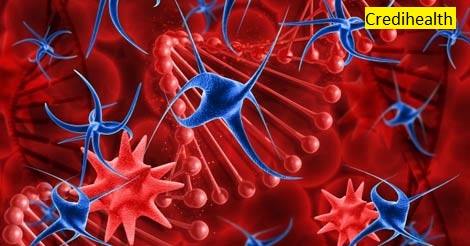Introduction to Breast Cancer
Breast cancer remains one of the most common cancers affecting women worldwide. However, advancements in medical science have led to a wide array of treatment options, significantly improving patients’ survival rates and quality of life. Breast Cancer Treatment Cost in India, from well-established protocols to emerging therapies. Before delving into treatments, it’s crucial to understand that breast cancer is not a single disease but a group of diseases that differ in their biological characteristics and behaviour. Treatment plans are tailored based on several factors, including:
1. Cancer stage
2. Tumor size
3. Hormone receptor status (estrogen and progesterone)
4. HER2 status
5. Patient’s overall health and preferences
Standard Treatments for Breast Cancer
1. Surgery
Surgery is often the first line of treatment for many breast cancer patients. The two main types are:
a) Breast-Conserving Surgery (Lumpectomy): Removal of the tumour and a small margin of surrounding healthy tissue.
b) Mastectomy: Removal of the entire breast. This may be followed by breast reconstruction surgery.
In many cases, surgery also involves removing one or more lymph nodes to check for cancer spread.
2. Radiation Therapy
Radiation therapy uses high-energy rays to kill cancer cells. It’s often used after breast-conserving surgery to eliminate any remaining cancer cells. Types include:
a) External Beam Radiation: Delivered from a machine outside the body
b) Brachytherapy: Involves placing radioactive material directly into the breast tissue
3. Chemotherapy
Chemotherapy uses drugs to destroy cancer cells throughout the body. It can be given:
a) Before surgery (neoadjuvant) to shrink tumours
b) After surgery (adjuvant) to kill any remaining cancer cells
c) As the main treatment for advanced breast cancer
Common chemotherapy drugs include doxorubicin, cyclophosphamide, and paclitaxel.
4. Hormone Therapy
For hormone receptor-positive breast cancers, hormone therapy can be highly effective. It works by blocking the effects of estrogen or lowering estrogen levels. Options include:
a) Selective Estrogen Receptor Modulators (SERMs) like tamoxifen
b) Aromatase Inhibitors such as letrozole, anastrozole, and exemestane
c) Ovarian Suppression for premenopausal women
5. Targeted Therapy
These drugs target specific proteins or genes that contribute to cancer growth. The most well-known targeted therapy for breast cancer is trastuzumab (Herceptin) for HER2-positive breast cancers. Other examples include:
a) Pertuzumab (Perjeta)
b) Lapatinib (Tykerb)
c) CDK4/6 inhibitors like palbociclib, ribociclib, and abemaciclib
Emerging and Advanced Treatments
1. Immunotherapy
Immunotherapy harnesses the body’s immune system to fight cancer. While not yet as widely used in breast cancer as in some other cancers, promising options include:
a) Checkpoint inhibitors like pembrolizumab for certain triple-negative breast cancers
b) Cancer vaccines (still in clinical trials)
2. PARP Inhibitors
For patients with BRCA gene mutations, PARP inhibitors like olaparib and talazoparib have shown effectiveness in treating advanced breast cancer.
3. Antibody-Drug Conjugates
These drugs combine monoclonal antibodies with chemotherapy drugs. Ado-trastuzumab emtansine (T-DM1) and sacituzumab govitecan are examples used in certain types of breast cancer.
4. Cryoablation
This minimally invasive procedure uses extreme cold to destroy small tumours. It’s still being studied but shows promise for early-stage breast cancers.
5. Proton Therapy
An advanced form of radiation therapy that can target tumours more precisely, potentially reducing damage to surrounding healthy tissue.
Complementary and Supportive Therapies
While not direct cancer treatments, these therapies can help manage symptoms and improve quality of life:
1. Acupuncture for pain and nausea management
2. Mindfulness and meditation for stress reduction
3. Nutritional counseling
4. Physical therapy and exercise programs
5. Support groups and psychotherapy
Personalized Medicine and Future Directions
The future of breast cancer treatment lies in personalized medicine, where treatments are tailored to the specific genetic and molecular profile of each patient’s cancer. Advances in this area include:
1. Genomic Testing: Tests like Oncotype DX and MammaPrint help determine the likelihood of cancer recurrence and guide treatment decisions.
2. Liquid Biopsies: Blood tests that can detect circulating tumor DNA, potentially allowing for earlier detection of recurrence or treatment resistance.
3. AI and Machine Learning: These technologies are being used to analyze medical images and predict treatment responses more accurately.
4. CAR T-Cell Therapy: While primarily used in blood cancers, research is ongoing to adapt this revolutionary immunotherapy for solid tumours like breast cancer.
Challenges and Considerations
Despite the many treatment options available, challenges remain:
1. Treatment Resistance: Some cancers may become resistant to certain therapies over time.
2. Side Effects: Many treatments come with significant side effects that can impact quality of life.
3. Access and Cost: Advanced treatments may not be accessible or affordable for all patients.
4. Overtreatment Concerns: There’s ongoing debate about the potential overtreatment of some early-stage cancers.
Conclusion
The landscape of breast cancer treatment has evolved dramatically in recent years, offering hope and improved outcomes for many patients. From traditional approaches like surgery and chemotherapy to cutting-edge therapies like immunotherapy and personalized medicine, the options are more diverse than ever. However, it’s important to remember that every breast cancer case is unique. Treatment decisions should be made in consultation with a multidisciplinary team of oncologists, surgeons, and other specialists. Patients should feel empowered to ask questions, seek second opinions, and actively participate in their treatment planning.












